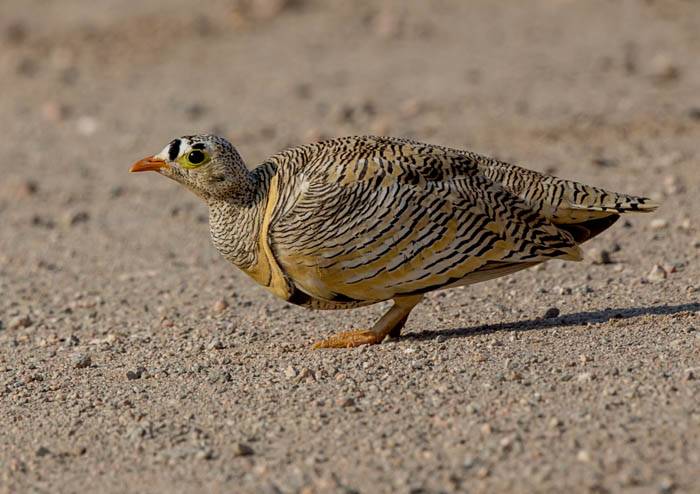
OSME Region List 5.1
The OSME Region List has recently been updated and is now available on our website: https://osme.org/ORL
IOC World Bird List v9.2 presents the difficult resequencing of the Non-passerine Orders, and the resequencing of many Scientific Families within many of these Orders. Its purpose is better to align families according to their genetic relationships at that level. It remains to be seen whether the scale of future taxonomic revisions will reduce because changes in general will mostly be within Scientific families. Considerable changes have been made to ‘traditional’ sequences and to indicate each major change, the ORL5.2 Non-passerine section has the double symbol ❆❆ placed after the first Family name in each ‘transplanted’ sequence. (Note that the Passeriformes comprise but a single Order, which allowed gradual and piecemeal resequencing over and number of years, a process much less complex than for the Non-passerine Orders).
For the ORL, the Non-passerine section Family sequence is now:
| Struthionidae | Ostriches |
| Numididae | Guineafowl |
| Phasianidae | Pheasants & Allies |
| Anatidae | Ducks, Geese, Swans |
| Caprimulgidae | Nightjars |
| Apodidae | Swifts |
| Otididae | Bustards |
| Cuculidae | Cuckoos |
| Pteroclidae | Sandgrouse |
| Columbidae | Pigeons, Doves |
| Rallidae | Rails, Crakes, Coots |
| Gruidae | Cranes |
| Podicipedidae | Grebes |
| Phoenicopteridae | Flamingos |
| Turnicidae | Buttonquail |
| Burhinidae | Stone-curlews, Thick-knees |
| Haematopodidae | Oystercatchers |
| Dromadidae | Crab-plover |
| Ibidorhynchidae | Ibisbill |
| Recurvirostridae | Stilts, Avocets |
| Charadriidae | Plovers |
| Pluvianidae | Egyptian Plover |
| Rostratulidae | Painted-snipes |
| Jacanidae | Jacanas |
| Scolopacidae | Sandpipers, Snipes |
| Glareolidae | Coursers, Pratincoles |
| Laridae | Noddies, Skimmers, Gulls |
| ‘Sternidae’ | Terns (Not a true family) |
| Stercorariidae | Skuas |
| Alcidae | Auks |
| Phaethontidae | Tropicbirds |
| Gaviidae | Divers |
| Oceanitidae | Austral Storm Petrels |
| Diomedeidae | Albatrosses |
| Hydrobatidae | Northern Storm Petrels |
| Procellariidae | Petrels, Shearwaters |
| Ciconiidae | Storks |
| Fregatidae | Frigatebirds |
| Sulidae | Gannets, Boobies |
| Phalacrocoracidae | Cormorants, Shags |
| Anhingidae | Darters |
| Threskiornithidae | Ibises, Spoonbills |
| Ardeidae | Herons, Bitterns, Egrets |
| Scopidae | Hamerkop |
| Pelecanidae | Pelicans |
| Pandionidae | Ospreys |
| Accipitridae | Kites, Hawks, Eagles |
| Tytonidae | Barn Owls |
| Strigidae | Owls |
| Upupidae | Hoopoes |
| Bucerotidae | Hornbills |
| Coraciidae | Rollers |
| Alcedinidae | Kingfishers |
| Meropidae | Bee-eaters |
| Picidae | Woodpeckers |
| Falconidae | Falcons |
| Cacatuidae | Cockatoos |
| Psittacidae | New World Parrots |
| Psittaculidae | Old World Parrots |
Addendum
Just a reminder, especially for national compilers of bird records and reports for Around the Region in Sandgrouse, that as detailed in v4.5 of the ORL, v4.5, all Sylvia Warblers in the OSME Region, except Blackcap and Garden Warbler, are now placed in the genus Curruca.
Mike Blair
Listmaster
OSME Region List
